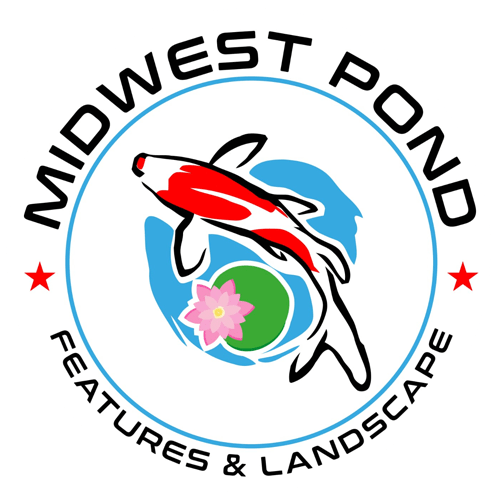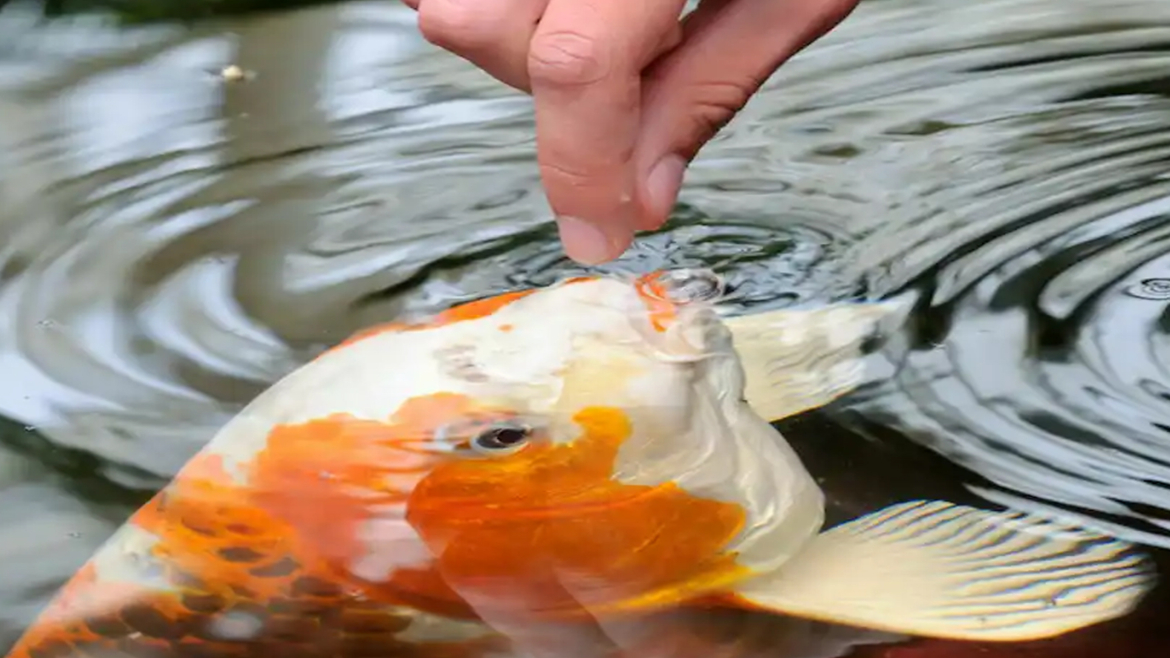One of the delights of creating a water garden is the pleasure of watching the fish in the pond swim tranquility around the pond.
In reality, the main reason people go for a pond rather than a waterfall or fountain is that it allows them to keep fish.
As pond owners think of their koi and goldfish as pets, it’s essential to have the right pond design to safeguard the health of fish friends.
Several things influence whether fish in the pond can call the pond home, so spend a couple of minutes sizing up the fish space before stocking a new pond or adding a koi or goldfish from a water gardening center.
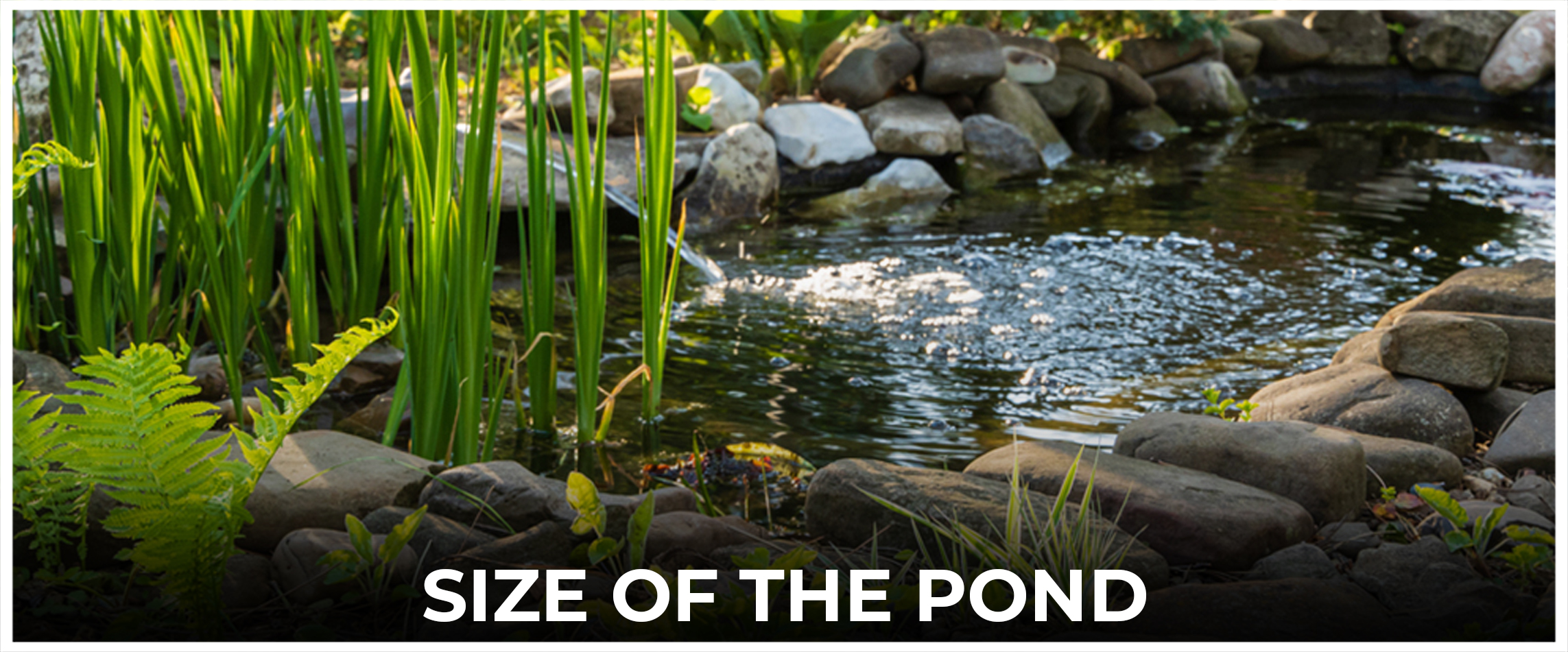
Size of the Pond
The sizing of the pond is critical and may affect the comfort and health of the fish.
The availability of sufficient space enables full growth and cuts down risks of problems associated with overpopulation including poor water quality and increased infections.
To determine the appropriate size for the pond, consider the following guidelines:
Calculate the Water Volume
To compute the volume of the pond in cubic feet, take the length, width, and depth in feet and multiply them together to get the total volume.
Once this volume is obtained, gallons can be calculated with the conversion factor of 7.48 gallons per cubic foot.
Assess the Length of Fish in the Pond
Calculate the average length of the fish. Nevertheless, as a general rule, it is recommended to give 10 gallons of water for every inch of fish length.
For instance, if the fish in the pond has an average size which is 6 inches in length, one would need a minimum of 60 gallons of water for every single fish.
Avoid Overstocking
However, although it can be very attractive to add more fish, do not follow the desire to overstock the pond.
Overcrowding brings along multiple issues, including the worsening of water quality, stunted development, and increased chances of diseases.
Aim for a stocking rate of no more than 1/2 inch of fish per 10 gallons of water to keep the fish healthy.
Monitor Water Quality
Testing the water quality parameters like pH, ammonia and nitrate levels on a regular basis is required in order to ensure they will remain in acceptable ranges.
This can lead to balanced perturbations which might negatively affect the fish.
Maintain Balance
Keep in mind that ponds to fish are ecological systems of a high level of sensitivity that are influenced by the slightest disturbances.
Cut down the number of fish in the pond, if the pond starts getting overpopulated in order to bring equilibrium into the system and to keep Mother Nature from interfering in a bad way.
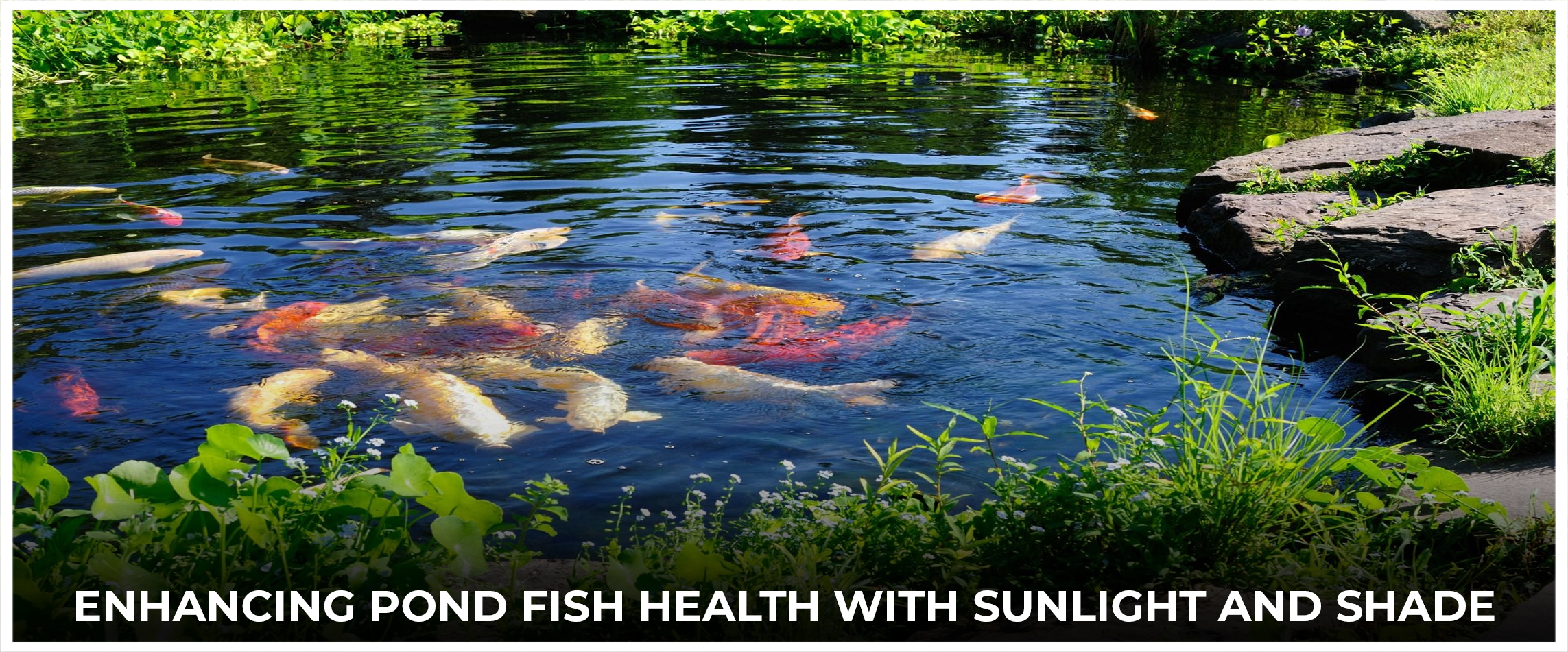
Enhancing Pond Fish Health with Sunlight and Shade
To promote a healthy ecosystem, ensure that the pond has some sunlight.
Sunlight gives fish the essential vitamins they need and promotes the growth of aquatic plants as a result of which the nitrates in the water are reduced.
If the pond is situated in a shaded area, there are still steps that can be taken to maintain a healthy balance:
Add Shade-Loving Plants
Start filling the pond around with shade-tolerant water plants to establish a balanced ecosystem.
These plants are adapted to thrive in dim light and help in water quality maintenance while providing shelter and habitat for fish in the pond.
For instance, some examples of shade-tolerant aquatic plants include Taro, Papyrus, Horsetail, Cardinal Flower, Lizard’s Tail, and Water Forget-Me-Not.
Consider Waterlilies
When it comes to water lilies, if the pond receives at least 4 hours of sun, there are water lily varieties that can tolerate shadier areas.
Waterlilies not only lend beauty to the healthy pond but also provide cover and help oxygenate the water.
Maintaining Pond Health
The routine observation of the pond’s health and its inhabitants. Ensure the water quality is the top priority by monitoring the parameters, including pH, ammonia, nitrite, and nitrate levels.
Make necessary adjustments to offer the best environment for the fish and plants.
Two Feet Deep
Regarding the pond depth for fish, koi fish are not really discriminating. Just make sure the depth of the pond will be about 2 to 2 ½ feet so that they may escape from predators.
Consequently, this depth is more than enough for deep shelter of fishes in northern parts.
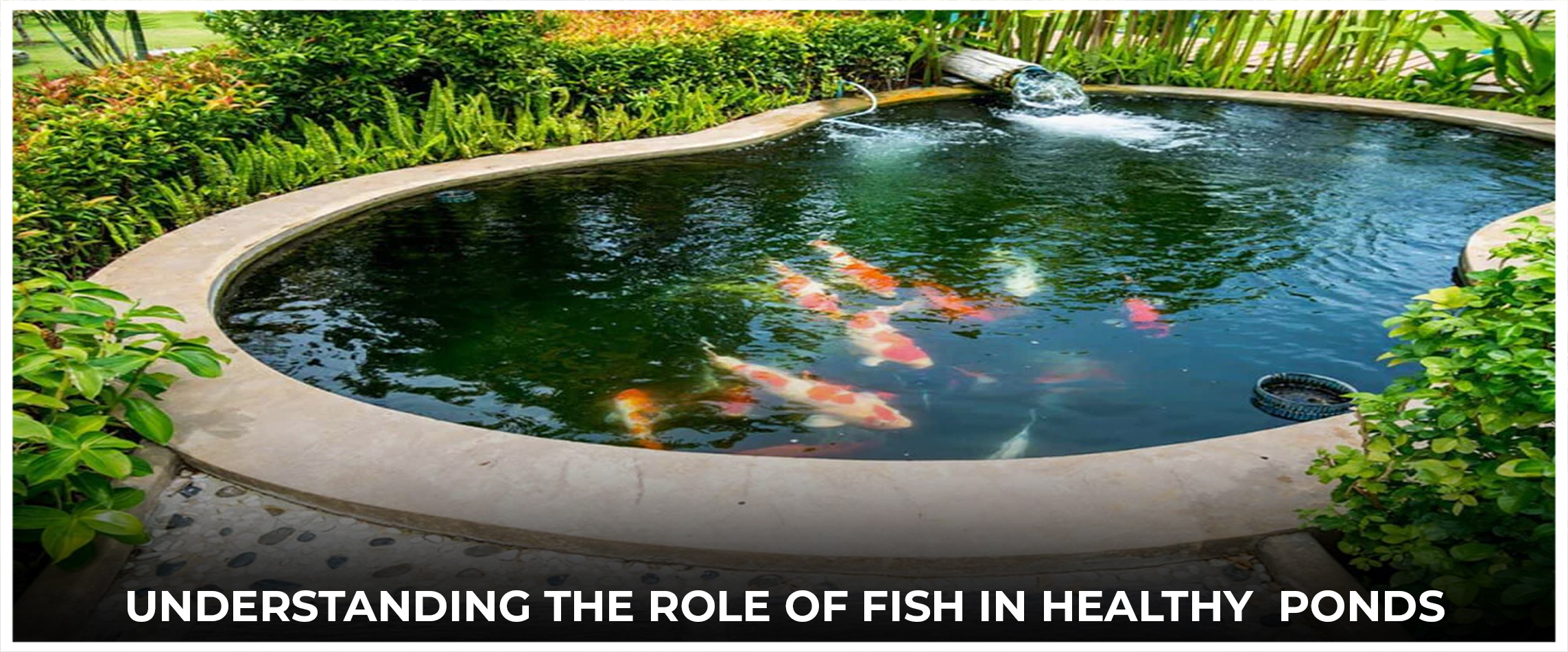
Understanding The Role Of Fish In Healthy Ponds
It is not only the fish that are the inhabitants of a garden pond; instead, they act as the guardians of its ecosystem.
The healthy fishes help the ecosystem of the pond maintain a balance by keeping algae from overgrowing and also by eating mosquito larvae. Moreover, they create the sense of fluidity and liveliness of the pond.
If fish are ill-health or sick, it severely disturbs the ecosystem of the pond because of imbalance.
There are various signs of illness in diseased fish, including their lethargy, loss of appetite, abnormal swimming behavior, or visible signs like lesions or discoloration.
These symptoms should not be neglected as they can lead to worsening of the fish’s health and even death of the fish and other inhabitants of the pond, which in turn can have negative effects on the water quality.
Safeguarding Fish Heath
The better we can achieve this task, the less we need to deal with the disease burden.Here are some essential preventive measures for maintaining fish health in garden ponds:
Water Quality Management
Monitor and perform frequent tests of water conditions including for pH, ammonia, nitrite, and nitrate quantities.
Keeping up with good water quality can be done by carrying out partial water changes, removing debris, and avoiding overfeed fish in the pond.
Proper Pond Filtration
Are available in the market to help remove debris, trash, and contaminants from the water body.
Filtration through water, waste, and chemical treatment systems makes the pond water clean and clearer and reduces the risk of disease.
Adequate Oxygenation
Make sure of the aeration in the pond and install the oxygenation system with air pumps, fountains, or waterfalls.
The supply of oxygen is one of the important balanced factors for both fish breathing and their health.
Quarantine New Fish
Disease surveillance is crucial before stocking new fish for a pond into a pond; quarantine the new fish in a separate tank for a few days or weeks to observe any signs that may indicate disease.
It makes the water in the secondary pond healthy, thus preventing the fish from the main pond from getting any diseases transferred to them.
Provide Hiding Places
Make the park a sanctuary by building refuges and shelters for the fish which help struggling fishes and prevent their stress and friction Rocks, plants and artificial structures can offer the place of safety as a site where these organisms can hide at times of fear.
Balanced Diet
Make fish to eat varied and balanced meals so that it can have a balanced nutrition and immune system.
Keeping food input within a given limit is of utmost importance so that the discharge of food particles from the system does not affect the water quality.
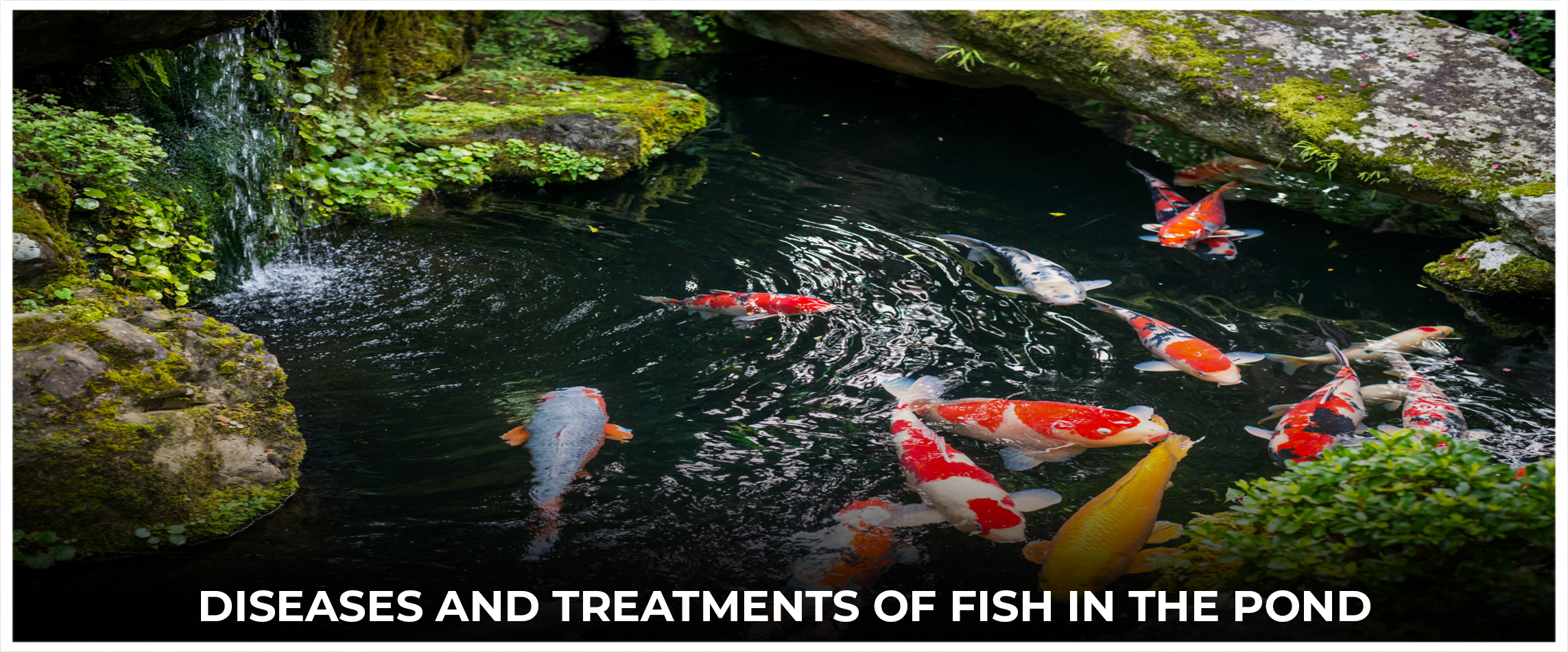
Diseases and Treatments Of Fish In The Pond
No matter how rigorous our preventive measures are, there will still be cases of fish dying due to illness. Immediate diagnosis and treatment must be carried out in order to contain the disease outbreak and limit its effects on the pond’s biological environment. Here are some common fish diseases encountered in garden ponds and their treatments:
Ichthyophthirius (Ich)
This parasitic protozoan, which causes whitening of fish tissue such as its body and fins, is a protozoan called white spot disease.
Generally, therapy includes raising the water temperature gradually in small increments and using remedies such as formalin or copper-based treatments for seawater.
Fin Rot
Bacterial infection evidenced by fin deterioration, specifically of the fins, commonly found in fish due to poor quality water or fleshy injuries.
Treatment is performed through improving the quality of the water, doing salt baths, and medications which are given if necessary.
Ulcers and Lesions
If the ulcer or lesion is caused by a bacterial infection or physical injury, then it would normally hurt. Disinfect the contaminated zone with a soft antiseptic solution. In some conditions, it may even need to isolate the infested fish.
Give the prescribed drugs to the pets, as animals know best.
Fungal Infections
One of the biggest signs of fungal infection is white or gray spots on a fish’s skin patches, fins or gills.
Apply antifungal drugs to affected fish, and clean and improve the water quality so as not to allow further spread.
Parasitic Infections
There can be diverse kinds of parasites like flukes and anchor worms which contribute to symptoms like irritation, inflammation and secondary diseases of fish in the pond.
Some of the treatments are the usage of medicated water, deworming supplements, and the prescription of special drugs during parasitic infections i.e, the use of antibiotics.
How To Know If There Are Fish In A Pond?
People might wonder how to tell if there are fish in a pond, one can look for various signs and observations.
Firstly, observing movement on the water’s surface, such as ripples or disturbances, can indicate fish swimming beneath.
Additionally, watching for the occasional glimpse of a fish breaking the surface or the flicker of a tail as it swims can provide confirmation.
Once the presence of fish is confirmed, one might wonder how to fish in a pond.
Fishing in a pond can be an enjoyable pastime. Appropriate fishing gear and techniques, such as baiting hooks with live or artificial bait and casting lines into promising areas, can increase the chances of a successful catch.
However, to ensure the sustainability of the pond’s fish population, it’s essential to adhere to local fishing regulations and practice responsible angling.
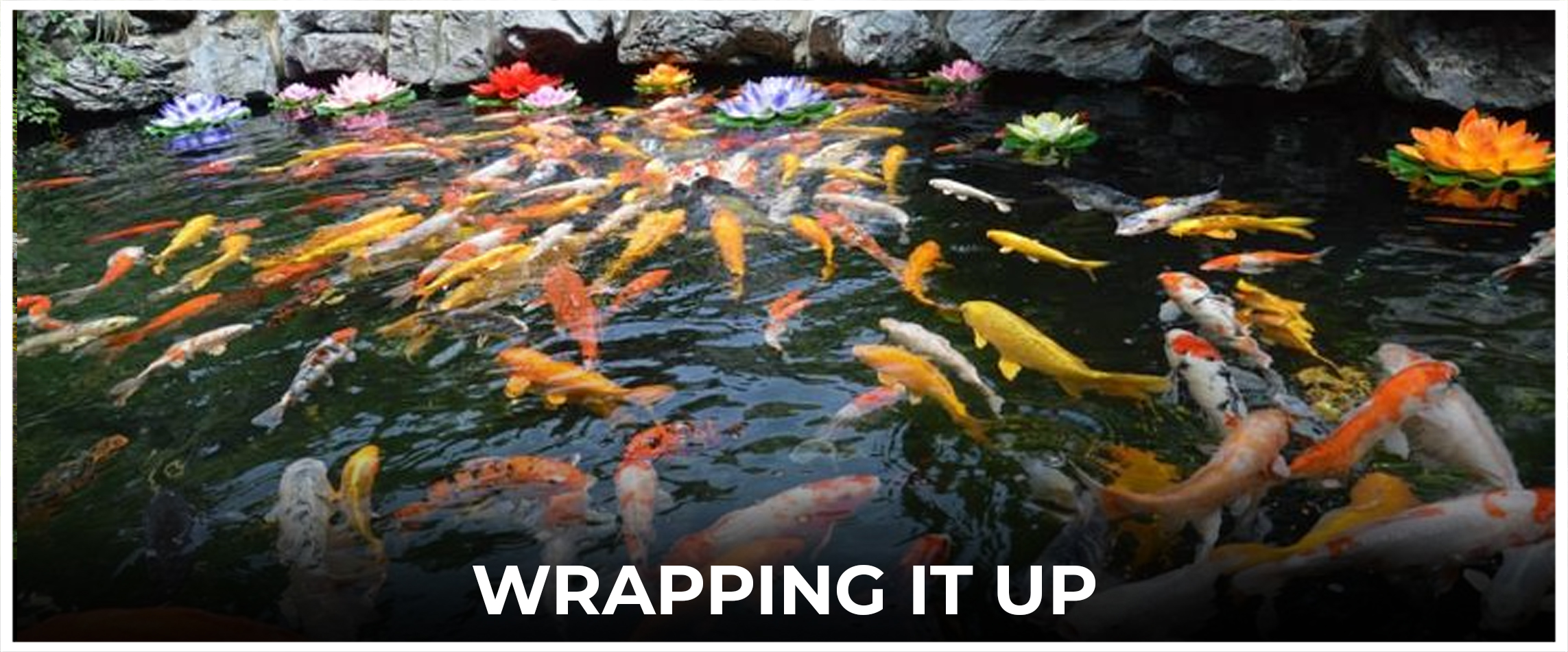
Wrapping it Up
When it comes to garden ponds, the tranquility of our aquatic life is a priority. It is up to us to make sure that our fish in the pond are well looked after, thus creating a healthy living space for them. Through the adoption of a mix of preventive measures and proactive treatment approaches, our fish may be protected from common diseases.
Besides the preventive and curative aspects of diseases, maintaining a healthy pond ecosystem enhances our lives in many ways. Looking at the colorful fish in the pond, swimming in the sparkling waters lends calmness and happiness to our outdoors.
Notably, the ponds are full of alive and colorful aquatic creatures, which can become a great feature to attract attention and calmness inside the hectic rhythm of traffic. As we care for our healthy ponds, we are not only establishing thriving water systems but also promoting a deeper connection between ourselves and nature.
